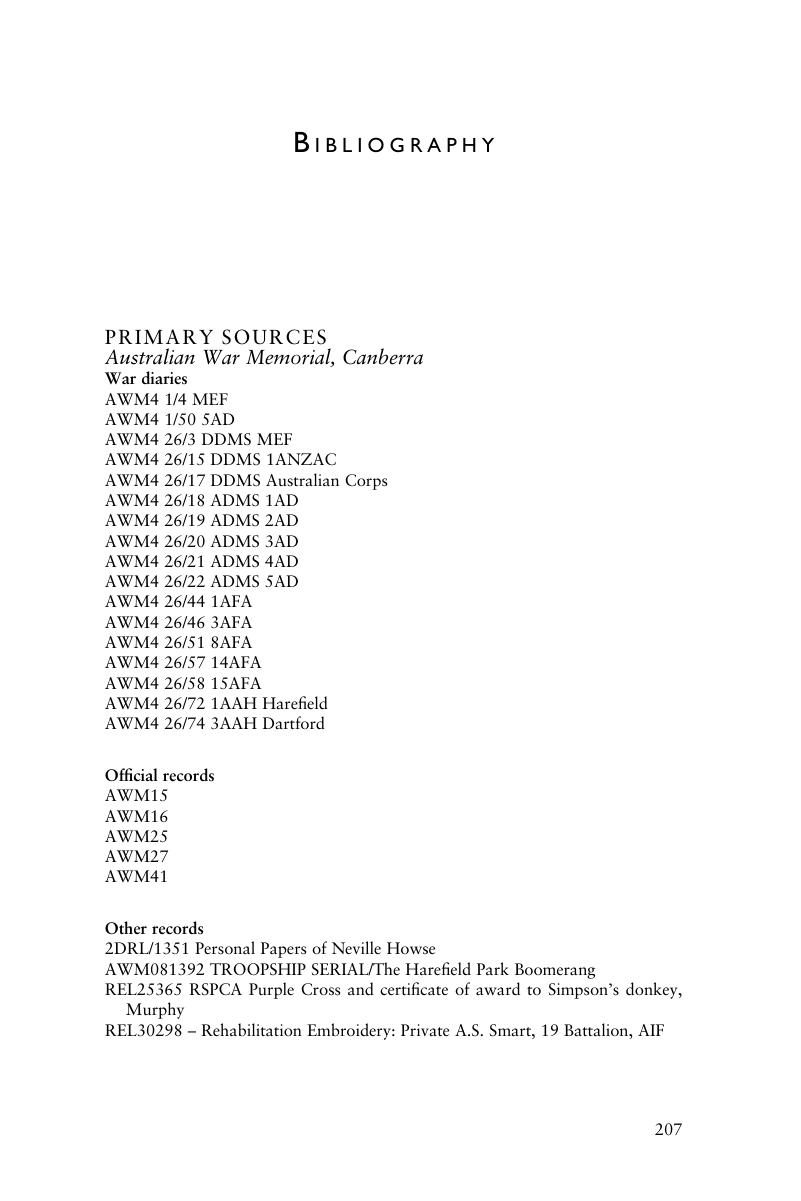Book contents
- Expertise, Authority and Control
- Other titles in the Australian Army History Series
- Expertise, Authority and Control
- Copyright page
- Contents
- Figures, maps and tables
- Preface
- Acknowledgements
- Note on style
- Abbreviations
- Introduction
- Chapter 1 Gallipoli
- Chapter 2 Medicine in the lines
- Chapter 3 The Western Front in 1918
- Chapter 4 A pleasant dose of medicine?
- Chapter 5 The most difficult problem
- Conclusion
- Notes
- Bibliography
- Index
- References
Bibliography
Published online by Cambridge University Press: 10 February 2020
- Expertise, Authority and Control
- Other titles in the Australian Army History Series
- Expertise, Authority and Control
- Copyright page
- Contents
- Figures, maps and tables
- Preface
- Acknowledgements
- Note on style
- Abbreviations
- Introduction
- Chapter 1 Gallipoli
- Chapter 2 Medicine in the lines
- Chapter 3 The Western Front in 1918
- Chapter 4 A pleasant dose of medicine?
- Chapter 5 The most difficult problem
- Conclusion
- Notes
- Bibliography
- Index
- References
Summary

- Type
- Chapter
- Information
- Expertise, Authority and ControlThe Australian Army Medical Corps in the First World War, pp. 207 - 213Publisher: Cambridge University PressPrint publication year: 2020

